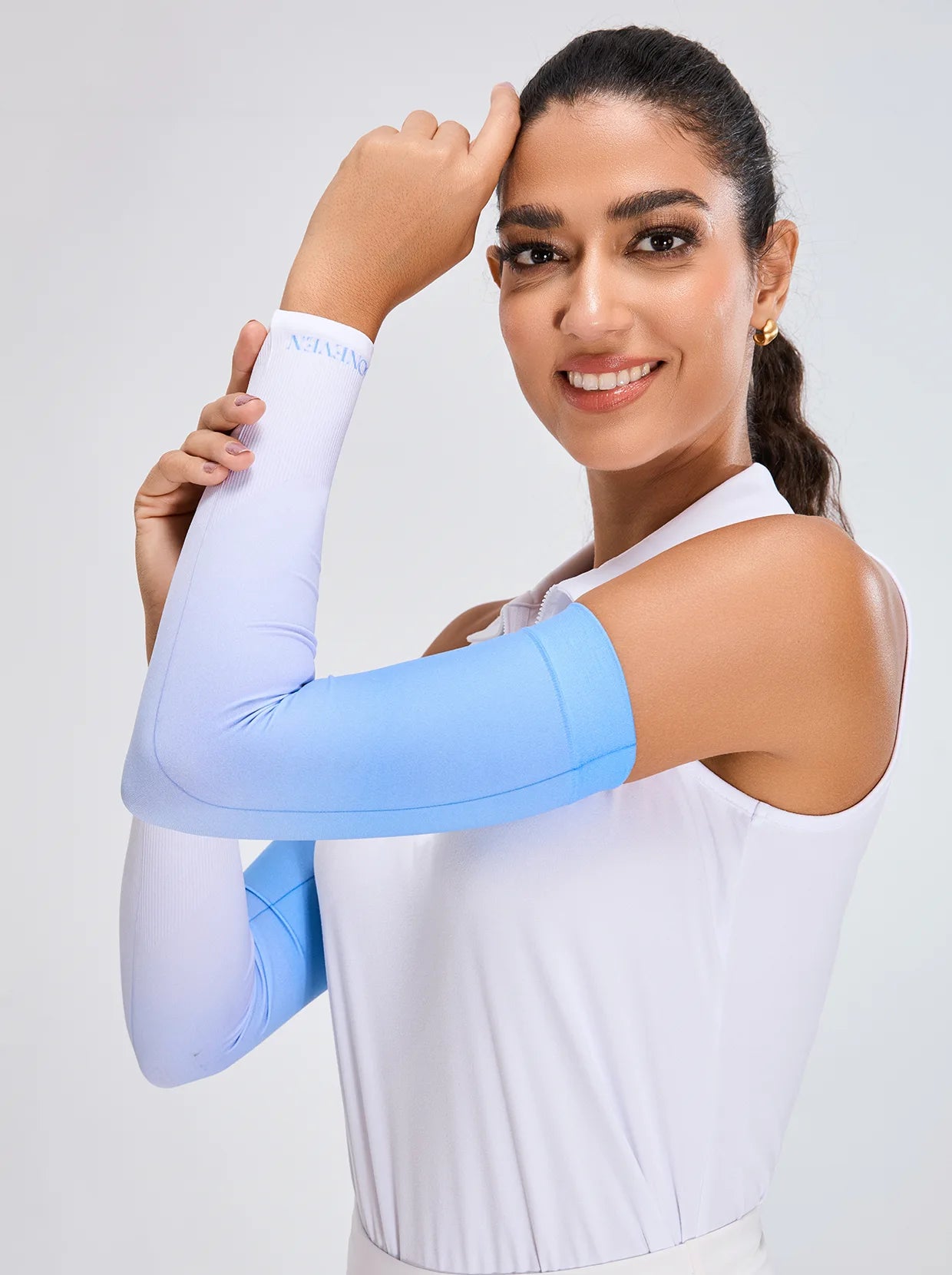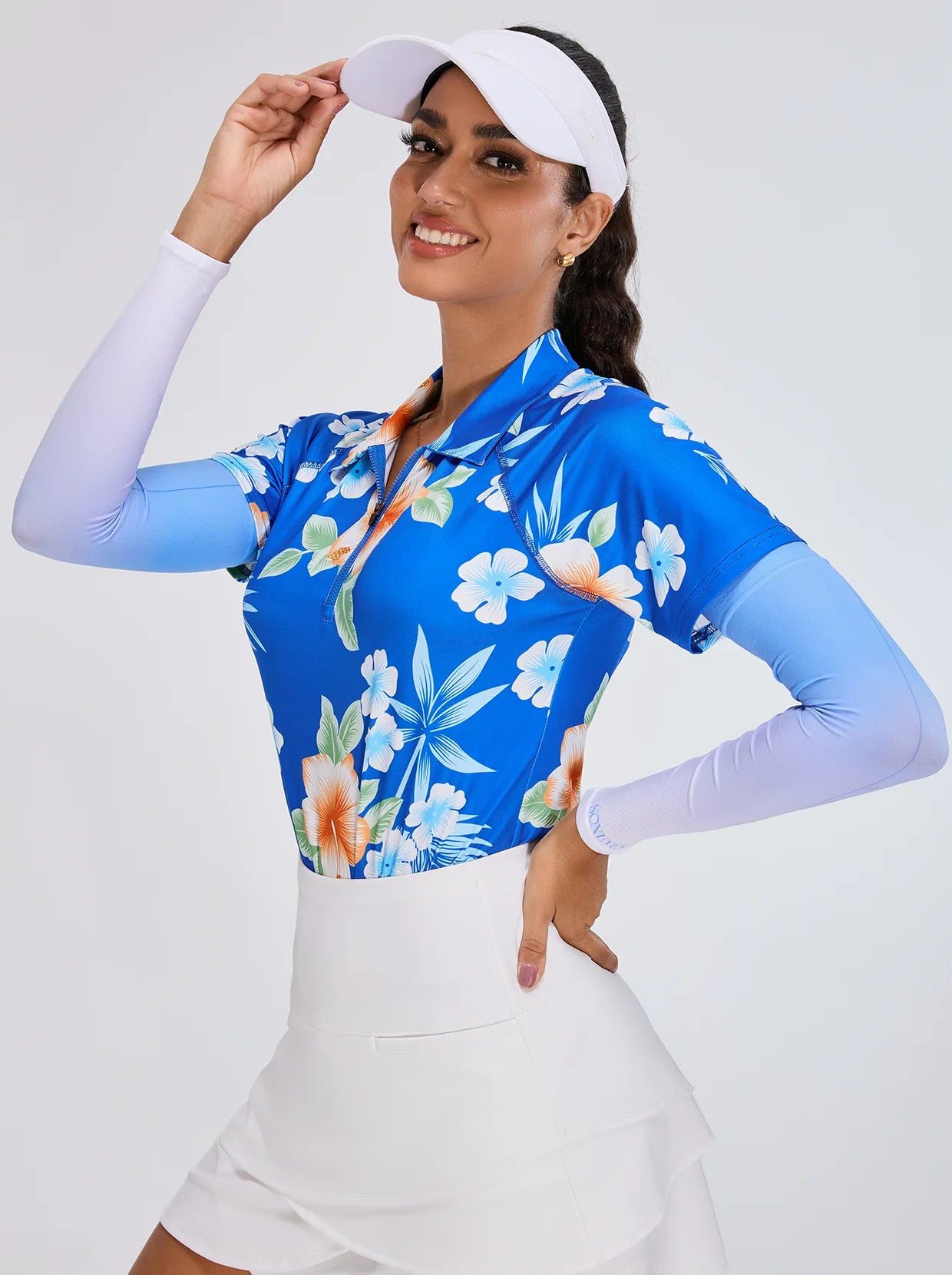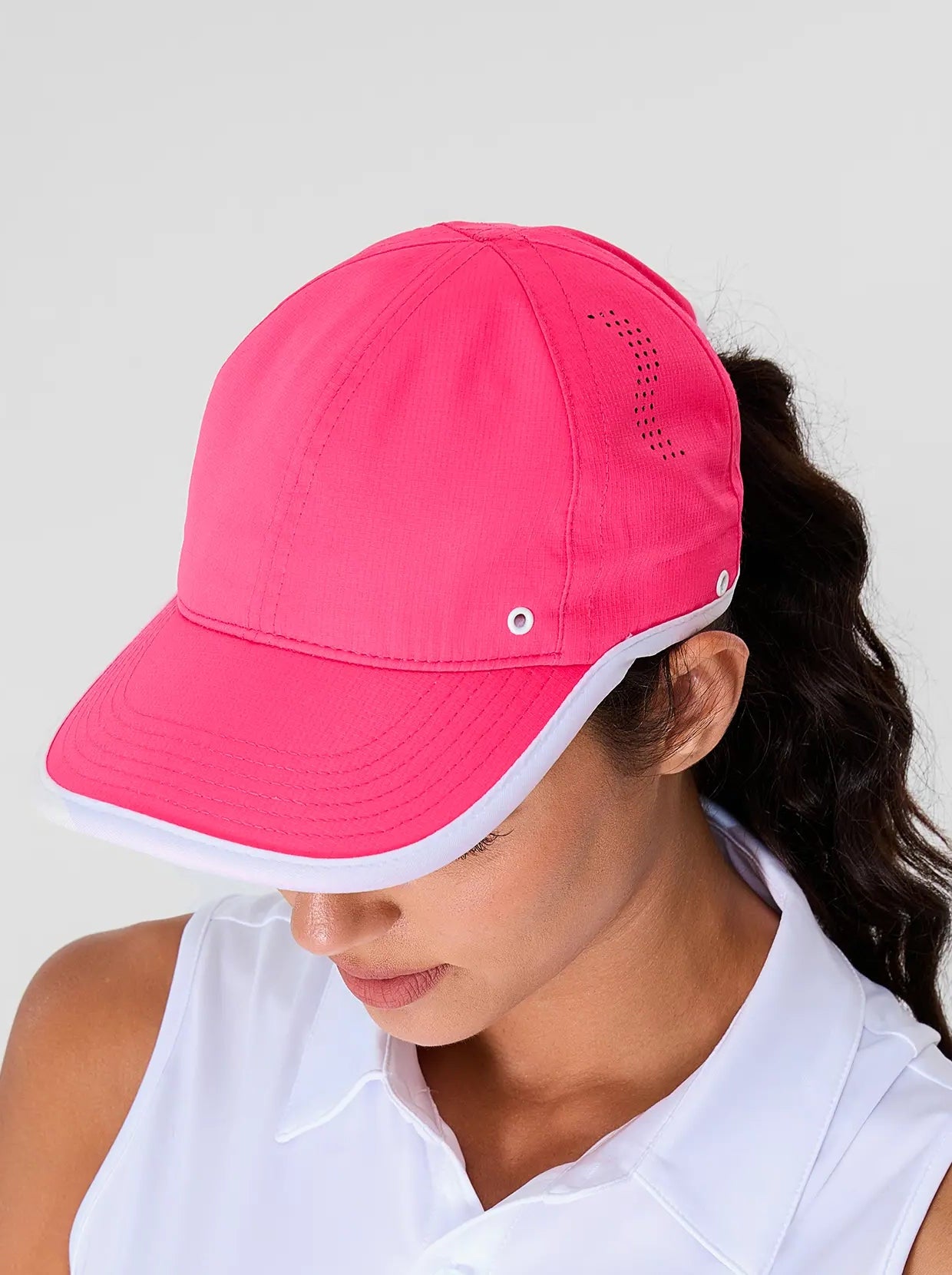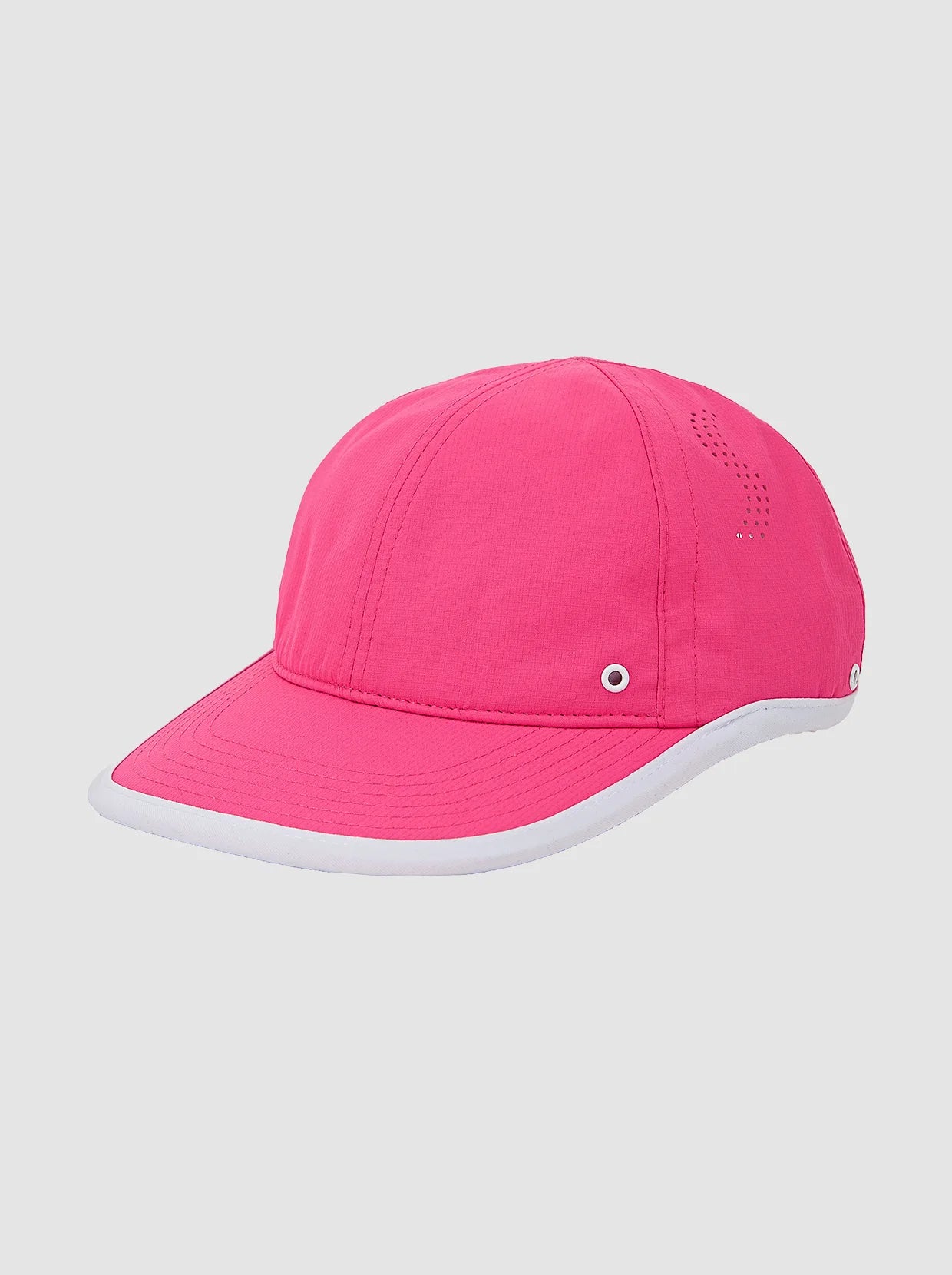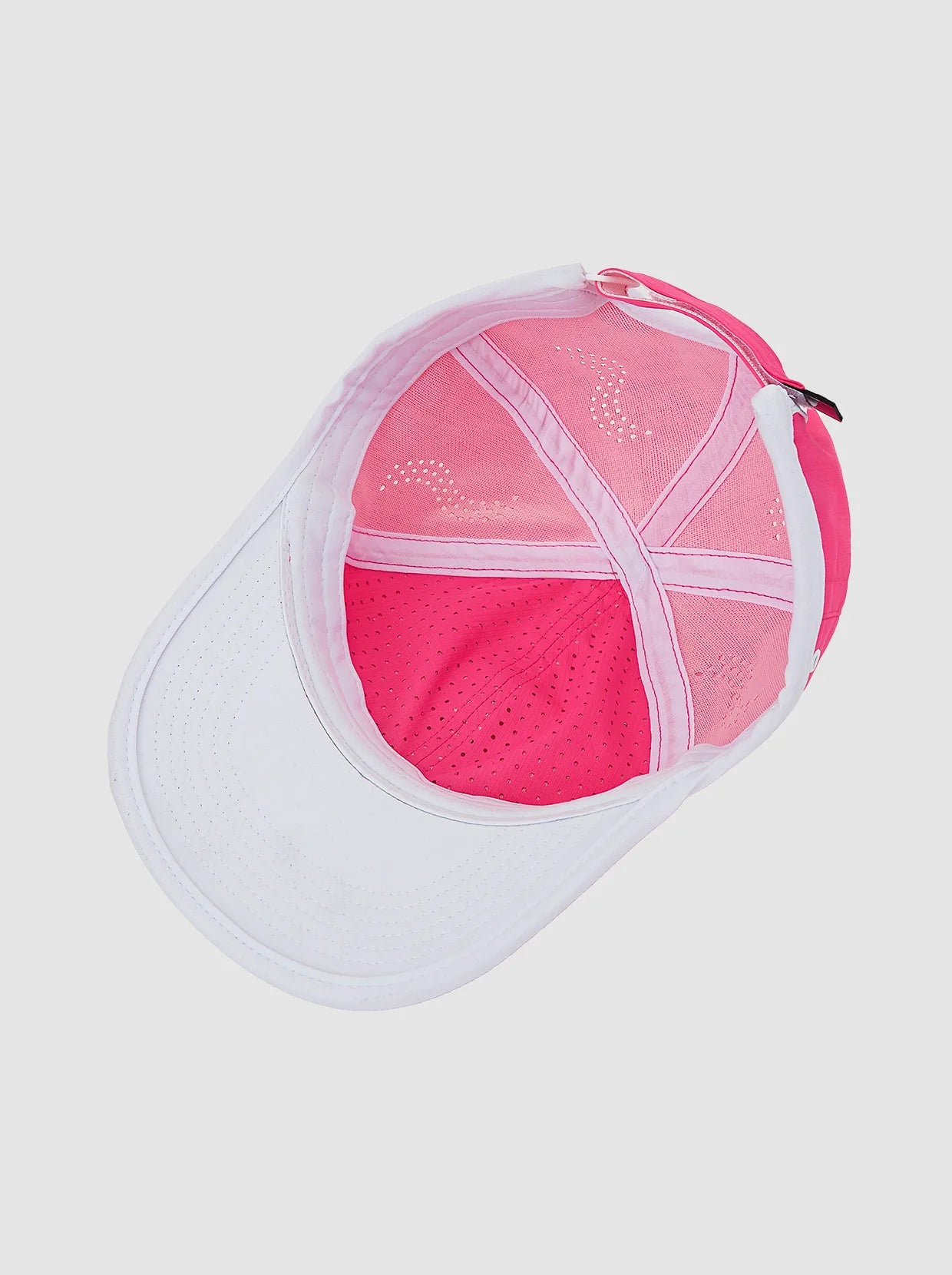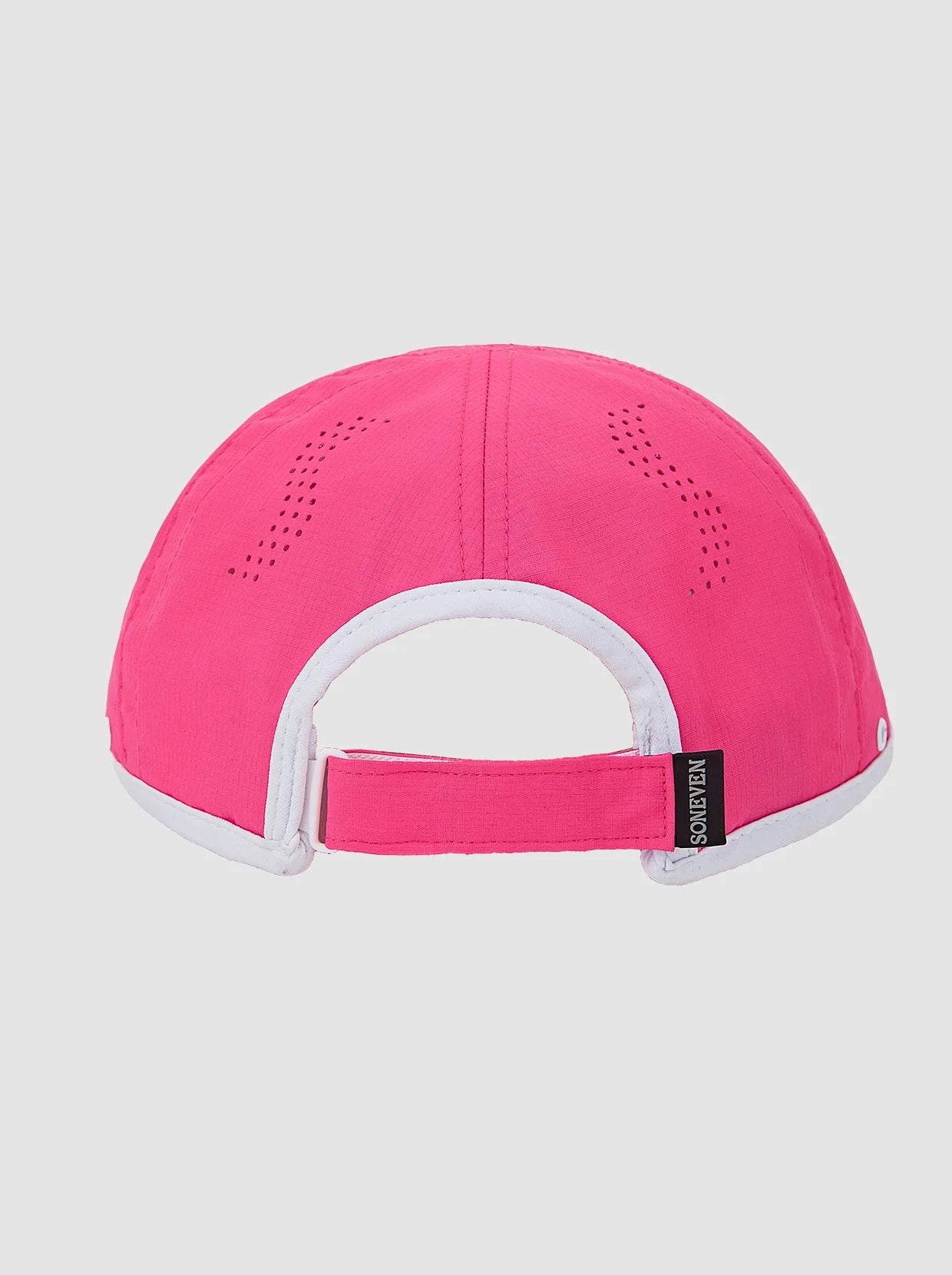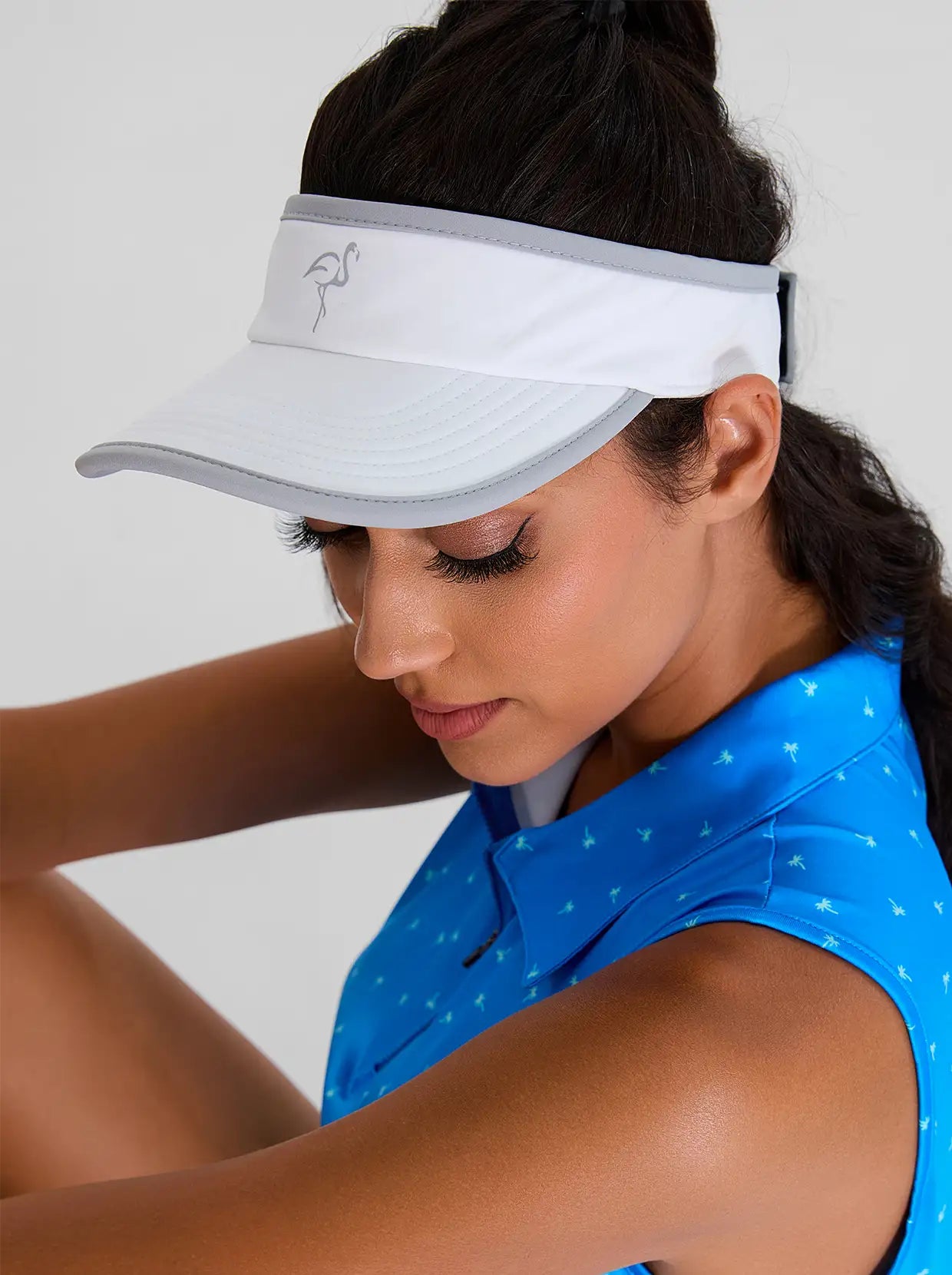Playing golf means spending hours outdoors, often in direct sunlight. While sport can be both physically demanding and fun, it also exposes you to harmful UV rays that can cause skin damage, among other health risks.
In order to enjoy the game while staying safe, it’s important to adopt sun protection strategies to minimize these dangers. In this article, we’ll look at the best ways to protect yourself from sun damage while on the golf course.
Why is Sun Protection Crucial on the Golf Course?
Because golfers spend a lot of time outdoors and often in direct sunlight, sun protection is necessary. Unlike many other sports, golf is played in open spaces with little shielding from the sun's harmful rays.
As a result, golfers are more likely to be exposed to ultraviolet (UV) radiation for a long time, which can cause immediate skin damage, such as sunburn. Over time, repeated exposure to UV rays increases the risk of more serious health problems, including skin aging and skin cancer.
What are the Risks of Sun Exposure for Golfers?
When playing golf, prolonged exposure to the sun can lead to health problems. Here are some of the main risks for golfers when exposed to the sun:
-
Sunburn: Prolonged exposure to sunlight can lead to sunburn, causing redness, pain, peeling, and in severe cases, blisters.
-
Skin Cancer: Ultraviolet (UV) radiation is a major cause of skin cancer. Golfers spend long hours outdoors, which increases their cumulative exposure to UV rays, raising the risk of skin cancers such as melanoma, basal cell carcinoma, and squamous cell carcinoma.
-
Premature Skin Aging: UV rays damage collagen and elastin in the skin, leading to premature wrinkles, age spots, and skin sagging. For golfers frequently exposed to the sun, this accelerated aging process can affect both skin health and appearance.
-
Eye Damage: UV rays not only harm the skin but also pose a risk to the eyes, increasing the chances of cataracts, macular degeneration, and other eye conditions. Prolonged sun exposure can lead to eye irritation, dryness, fatigue, and even permanent vision damage.
-
Suppressed Immune System: Excessive UV exposure weakens the immune system, reducing the body’s ability to fight off infections and inflammatory skin conditions.
-
Dehydration and Heatstroke: Playing golf in the hot sun can lead to excessive sweating and fluid loss, which increases the risk of dehydration and heatstroke. Golfers may experience dizziness, nausea, fatigue, and other symptoms of heat-related illness.

How to Stay Protected When Playing Golf in the Sun?
Use Sunscreen Effectively
Apply a broad-spectrum sunscreen with SPF 30 or higher to all exposed skin, including the face, neck, ears, and hands, and reapply every two hours or after sweating or wiping your face. Don’t forget your lips; you can use a lip balm with SPF. Just sticking with sunscreen will help prevent sunburn and long-term skin damage.
Wear Protective Clothing
Choose UV-blocking clothing with a high UPF rating to protect your skin from harmful rays. Choose long-sleeve polo shirts and pants made of breathable, moisture-wicking materials to keep you cool. Also, light-colored clothing reflects UV rays, while dark clothing absorbs them. Comfortable, protective clothing is key to staying safe in the sun. For women, a women's rash guard can offer additional protection while being comfortable during your game. Also, wearing women's golf clothes designed for sun protection can enhance comfort and style while keeping harmful UV rays at bay.
Wear Sun Protection Accessories
A wide-brimmed hat helps protect your face, ears, and neck from direct sunlight. Choose sunglasses with 100% UV protection to protect your eyes from harmful rays. Choose a hat with a brim of 3 inches or more, as recommended, and make sure the sunglasses fit comfortably and fully cover your eyes. Therefore, these accessories provide the necessary coverage and comfort.
Seek shade whenever possible.
Take breaks in shaded areas such as the shade of a tree or shelter to minimize sun exposure. Carry a UV-protective umbrella for extra protection during breaks. Even short breaks in the shade can reduce your total sun exposure. It is recommended to use available shade or bring your own to stay cool and protect your skin.
Hydrate frequently
Drink water regularly before, during, and after a game to stay hydrated, and sports drinks with electrolytes can replenish minerals lost during intense play. If you fail to stay hydrated, dehydration increases your risk of heat stroke, so try to keep drinking small amounts of water to keep your body hydrated to maintain energy and performance.
Play during off-peak sunlight hours
The sun is strongest between 10 a.m. and 4 p.m., so try to play in the early morning or late evening to avoid peak UV radiation. Temperatures are also lower during these times, making your play more comfortable.

When is UV Intensity Highest During a Round of Golf?
UV levels are highest when playing golf between 10 am and 4 pm. This is when the sun's rays are most direct and intense, resulting in the highest levels of UV radiation, making it the most dangerous time for sun exposure, which increases the risk of long-term health problems such as skin damage, sunburn, and skin cancer.
To minimize sun exposure, it is best to schedule your golfing session in the early morning or late afternoon when the sun is lower and UV levels are significantly lower.
How to Choose the Best Clothing for Sun Protection While Playing Golf?
When choosing the best sun-protective clothing for golf, you can consider the following factors:
-
Choose UV-Blocking Fabrics: Look for clothing made from fabrics with a high UPF (ultraviolet protection factor) rating. These fabrics block UV rays more effectively than regular clothing, and items labeled "UV-blocking" or "sunscreen" are the best defense against harmful sun exposure.
-
Choose Lightweight, Breathable Materials: Choose lightweight, breathable fabrics like polyester, nylon, or moisture-wicking blends. These fabrics make the type of skirts, clothing, etc. that will keep you cool and comfortable while protecting you from the sun. Avoid heavy fabrics that trap heat and make you overheat.
-
Wear Long Sleeves and Long Pants: Although they feel warmer, long sleeves and long pants offer the best protection from UV rays. Loose, light-colored clothing is recommended, which reflects sunlight and allows air to circulate, keeping you cool while providing the best protection from the sun. Consider a women's rash guard for extra protection.
-
Wear a Wide-Brimmed Hat: A wide-brimmed hat (at least 3 inches) helps protect your face, ears, and neck from direct sunlight. For extra protection, choose a hat made from UV-blocking material that provides extra protection while keeping you out of the sun.
Conclusion
Playing golf exposes you to the sun for long periods of time, which can increase your risk for certain skin or health problems, such as skin cancer. To protect yourself, it is recommended that you practice the sun protection strategies mentioned above, such as using sunscreen, choosing appropriate golf clothing or wearing UV-protective clothing(such as the Soneven Coconut Tree Quarter-zip Long-sleeve Rash Guard for Ladies), and staying hydrated.
In addition, seek shade when possible, avoid peak UV hours, and wear sun-protective accessories. By taking these precautions, you can enjoy your time on the course while minimizing the harmful effects of the sun.
Related Reading: what to wear with polo shirt female?






















